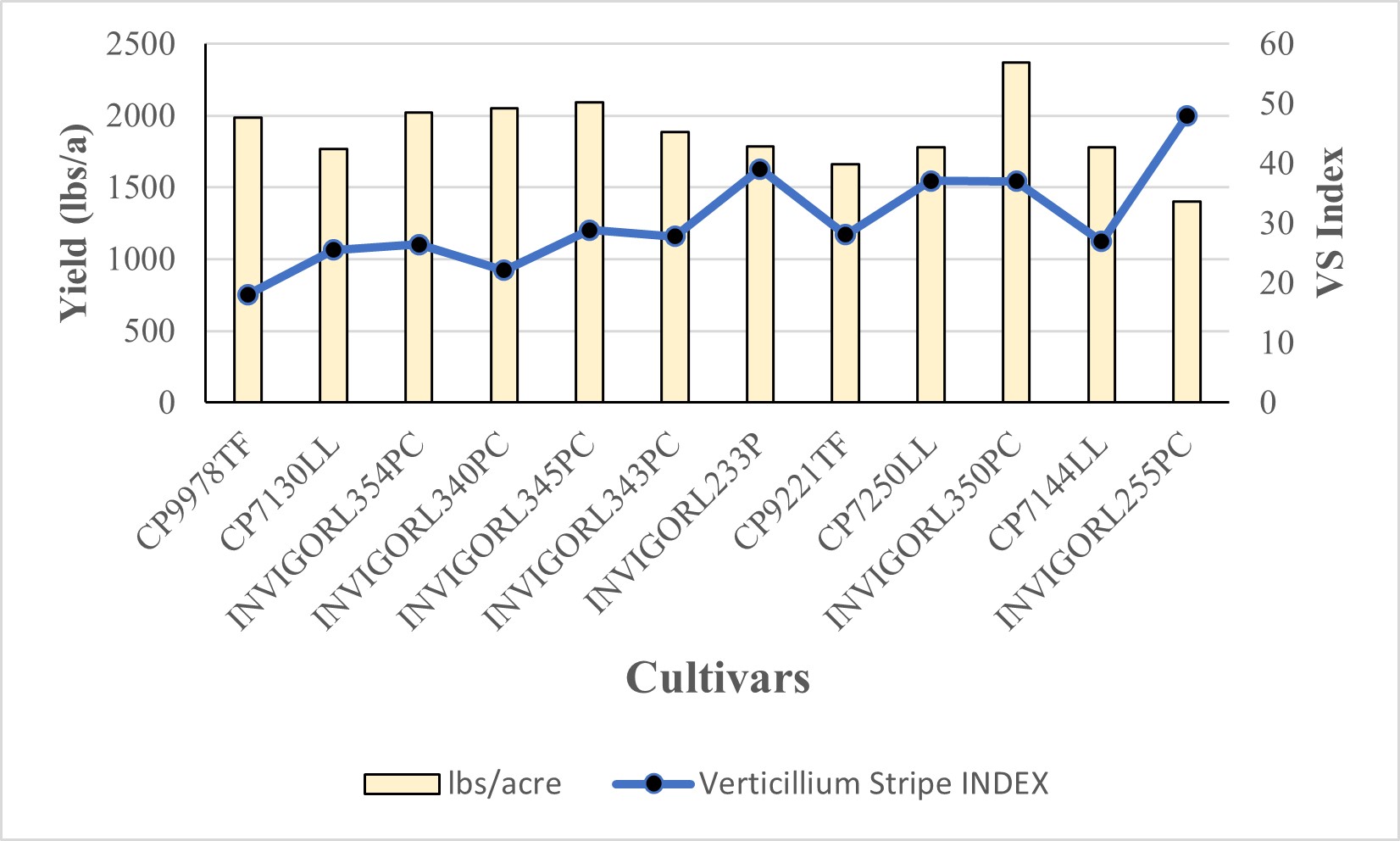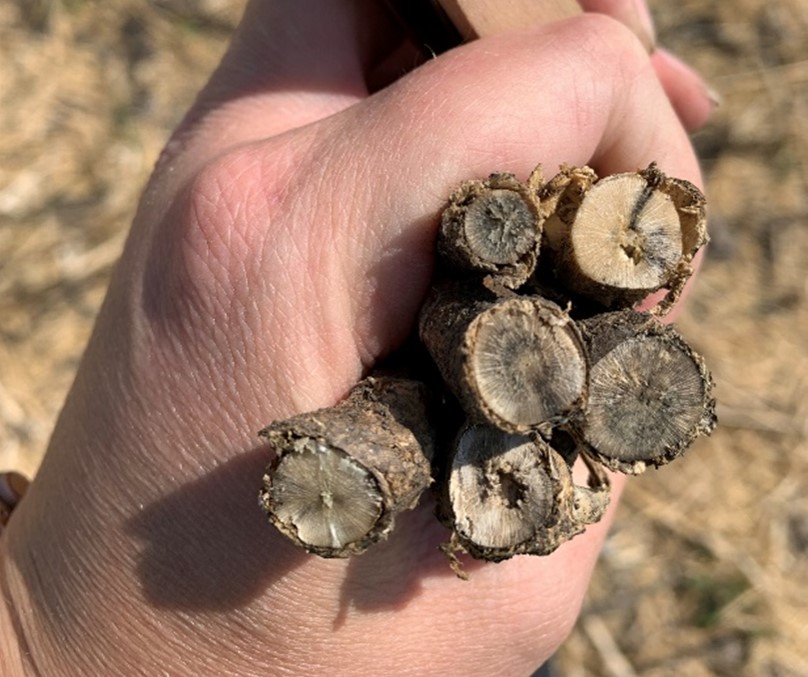Canola cultivars/varieties: Twelve commercial canola cultivars with unknown resistance to Verticillium stripe were planted to monitor the level of resistance against the pathogen Verticillium longisporum (Table 1). The trial was planted on May 22, 2024 in a randomized complete block design (RCBD) with four replications. The amount of Verticillium stripe infection obtained in the research plots was from a meticulously developed artificial inoculum in the lab, using wheat grain as the source.
Table 1: Canola cultivars evaluated for Verticillium longisporum in North Dakota.
| Cultivar | Description |
|---|
| CP9978TF | Croplan Genetics |
| CP7130LL | Croplan Genetics |
| CP7144LL | Croplan Genetics |
| InVigor LR354PC | BASF |
| InVigor L340PC | BASF |
| InVigor L255PC | BASF |
| InVigor L345PC | BASF |
| InVigor L343PC | BASF |
| InVigor L233P | BASF |
| CP9221TF | Croplan Genetics |
| CP7250LL | Croplan Genetics |
| InVigor L350PC | BASF |
Percent incidence and severity of Verticillium stripe was evaluated on September 4, 2024 by cross-section clipping of canola stems a half inch below ground level. Percent incidence was determined by the percent of infected stems, and percent severity was determined by the percent of the pith infected in each stem.
Data analysis: Statistical analysis was done using Genovix Generation II software. Fisher’s least significant difference (LSD) was used to compare means at p (α = 0.05).
Results: The cultivars exhibited significant differences in verticillium stripe resistance. Notably, the cultivar CP9978TF showed the lowest verticillium stripe disease index (18%), while the InVigor L255PC cultivar displayed the highest disease index (48%) of verticillium stripe (shown by the blue curve in Figure 1). These findings, along with the statistically significant differences in yield (shown by the vertical bars in Figure 1), with a mean yield of 1880 lbs, underscore the reliability of our research. The InVigor L350PC cultivar, in particular, recorded the highest yield (2369 lbs/a), further validating our findings and providing a solid foundation for future agricultural practices.
Figure 1: Mean Verticillium stripe Index (VS Index) and the average yield obtained on various commercial cultivars of canola tested in 2024.
The picture below depicts Verticillium stripe disease on the cross-section of canola stubbles. An index of Verticillium stripe disease (VS Index) was calculated using the percent incidence of the number of stubbles with pith discoloration out of the total rated stubbles. Severity was obtained by meticulously rating the percent area of each stubble that is discolored when cut in cross-section, ensuring the precision and reliability of our assessment.


